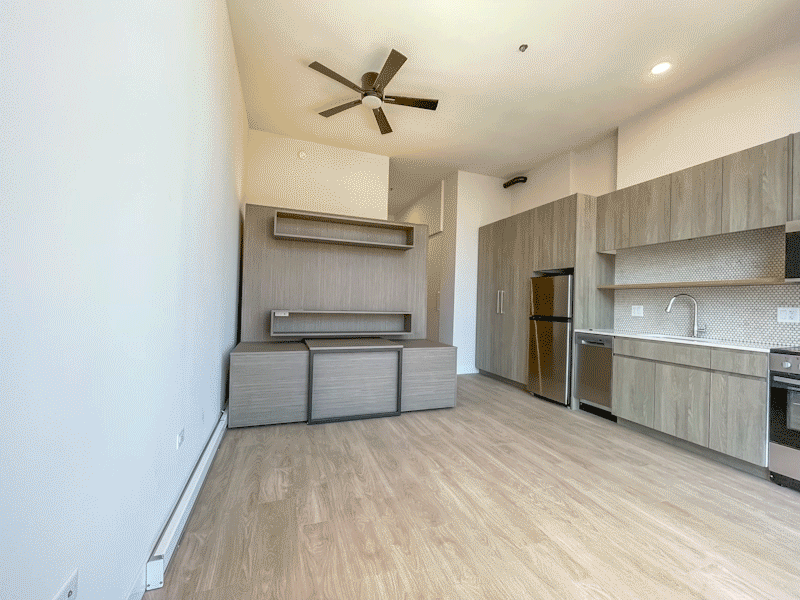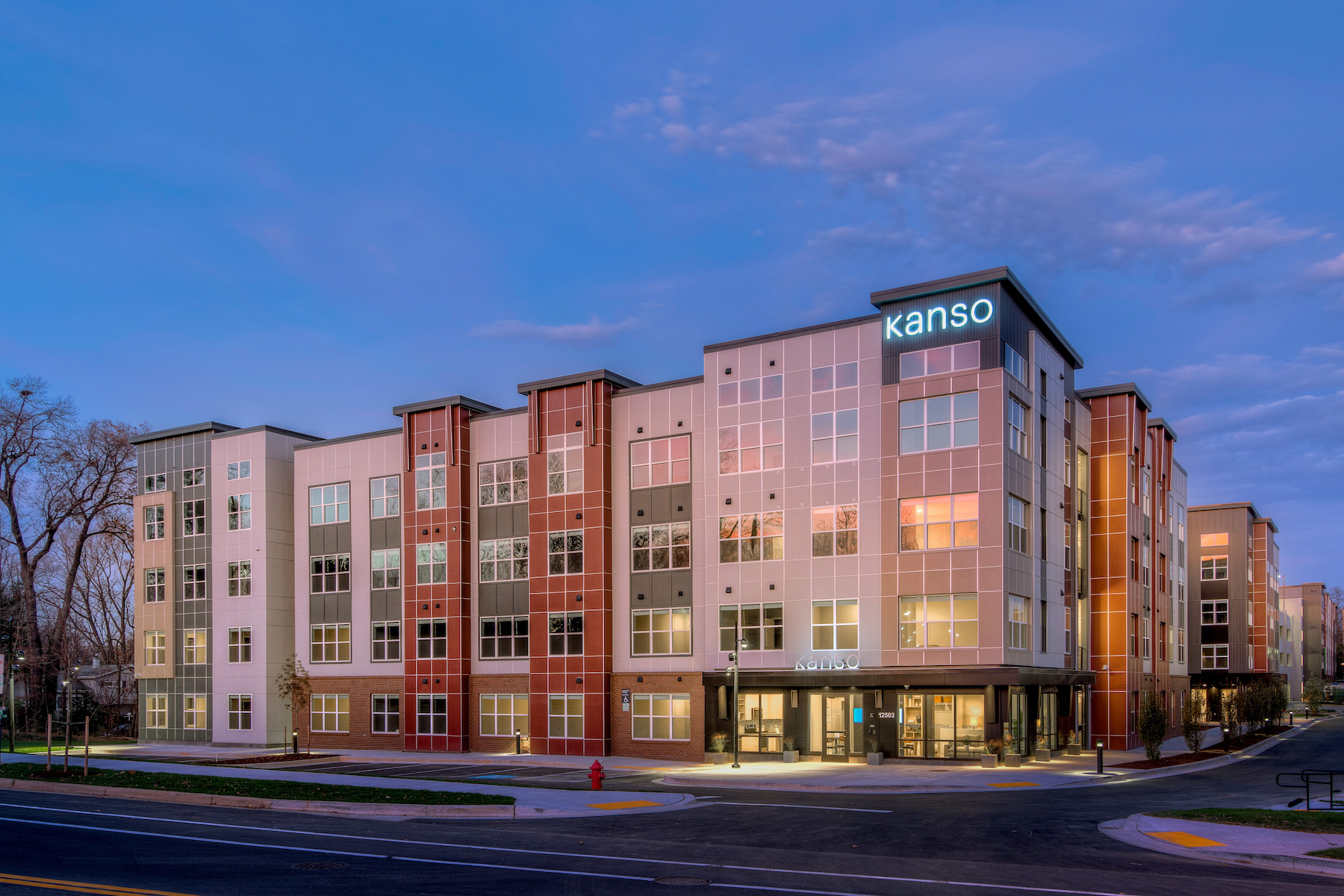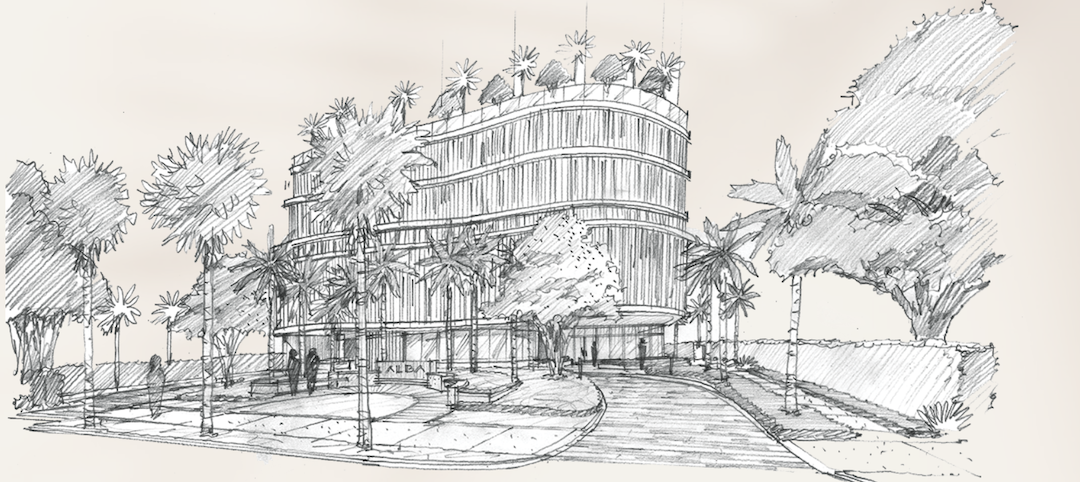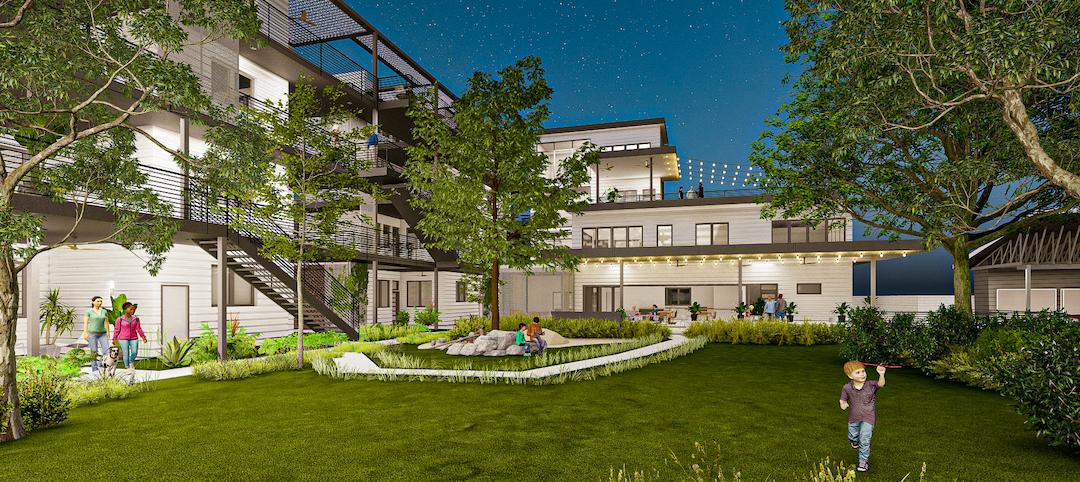Remote work is not only here to stay but is shaping the modern renter’s wants and needs while influencing design decisions and building plans across the industry.
New data from the 2022 National Multifamily Housing Council (NMHC)/Grace Hill Renter Preferences Survey Report, which features insights from more than 221,000 renters living in 4,564 communities across the U.S., shows that a rise in remote work was a driving force among renters who relocated during the pandemic. Of the 60 percent of survey respondents who moved during the past 18 months, 25 percent moved as a result of the shift to remote work.
Like many, renters are teleworking with higher frequency than ever before. Nationally, the share of respondents who are teleworking daily is roughly five times higher than it was two years ago. And many aren’t counting on that changing. Of those who currently telework (with any frequency), 64 percent anticipate working from home about the same amount over the next 12 months and 9 percent anticipate working from home more. In contrast, 27 percent said they anticipate working from home less over the coming year.
Curb-to-couch connectivity in multifamily housing
Renters have long demanded seamless connectivity, from curb to couch and everywhere in between, but this need has become critical as telecom and internet technology have become a lifeline to their livelihoods.
Respondents ranked reliable cell phone service as the No. 1 community amenity, with 86 percent of survey respondents indicating interest. Renters are even more serious about their internet connectivity in their units, with nine out of 10 respondents saying they were interested in or wouldn’t rent their home without it. An environment conducive to work also needs to be quiet and private, leading to strong interest in soundproof walls with 90 percent of renter respondents saying they are interested or won’t rent without this amenity.
As such, some communities are opting to offer high-speed, community-wide Wi-Fi as part of the properties’ amenity package. For example, AvalonBay Communities’ Kanso Twinbrook, in Rockville, Md., partners with WhiteSky to offer seamless, secure and instant high-speed Wi-Fi internet connectivity throughout the entire community. Residents can move in and log on—no equipment or installation appointments required.

Home offices and shared meeting spaces have also become in-demand features. While 19 percent of renter respondents said they would consider using a co-working facility when teleworking, such as WeWork or SPACES, a greater share of respondents (35 percent) indicated interest in using a shared workspace at their communities.
Not only are these amenities sought after, but renters are willing to pay an additional monthly premium for them. Of those interested, the average survey respondent is willing to pay $47.93 more per month for high-speed internet, $42.78 for reliable cell phone service, and $46.21 for soundproof walls. And for a convenient onsite alternative to work from home, interested renters are willing to shell out $36.60 more on average for an on-site rentable co-working space.
Recognizing this, some developers are making significant investments in their co-working amenities by repositioning common areas as co-working space, adding charging and print stations and even introducing more specialized equipment. For example, AMLI 808 in Chicago offers downtown living with a plethora of work-from-home amenities, including an on-site podcast studio and a DIY studio for makers and builders.
Flexibility becomes a key feature in apartment design
With the lines blurred between work and home, renters are increasingly looking for flexibility in their homes to accommodate these shifting needs. Versatility rules as nearly two-thirds of survey respondents said that flexible space in their homes was either important or extremely important. Adaptable floorplans that can adjust to a variety of needs and options for furnished or unfurnished units are among the features these live-work-play from home renters desire.
As an example, AMLI 808 also features Ori studio suites. Choreographing movement into apartment homes, this modular furniture system creates a private bedroom, an open living room, work from home space, storage and more—all at the touch of a button.

However, flex living isn't limited to just physical space. As remote work gives more renters the freedom to move about, they are considering alternatives to the traditional leasing model. For example, 56 percent of those who moved because of a switch to remote work said they would consider joining a rental housing membership program similar to a vacation club. That same group also indicated more interest than their non-mover counterparts in having the ability to list their rental homes on short-term rental sites like Airbnb or VRBO.
The pandemic has certainly changed the way we work; owners, developers and architects who recognize this new paradigm and respond with creative solutions will keep renters satisfied and the industry moving forward.
About the survey: Since its inception in 2013, the NMHC/Grace Hill Renter Preferences Survey Report has been the authoritative data source for apartment owners, managers, developers, industry suppliers, as well as architects, financial institutions and others seeking insights into the minds of renters. This biennial survey of residents at institutional-grade properties provides users with reliable data to make a variety of investment, development and operational decisions. Survey partners featured NMHC 50 companies including Greystar, AMLI Residential, and Windsor Communities.
Related Stories
Codes and Standards | Feb 21, 2022
More bad news on sea level rise for U.S. coastal areas
A new government report predicts sea levels in the U.S. of 10 to 12 inches higher by 2050, with some major cities on the East and Gulf coasts experiencing damaging floods even on sunny days.
Urban Planning | Feb 14, 2022
5 steps to remake suburbs into green communities where people want to live, work, and play
Stantec's John Bachmann offers proven tactic for retrofitting communities for success in the post-COVID era.
Senior Living Design | Feb 11, 2022
Design for senior living: A chat with Rocky Berg, AIA
Rob Cassidy, Editor of MULTIFAMILY Design + Construction, chats with Rocky Berg, AIA, Principal with Dallas architecture firm three, about how to design senior living communities to meet the needs of the owner, seniors, their families, and staff.
Multifamily Housing | Feb 8, 2022
Suffolk to build Alba Palm Beach
The project will feature 55 residences.
| Feb 4, 2022
New apartment complex Dixon Place honors the history of Salt Lake City
Salt Lake City’s Sugar House neighborhood has been experiencing somewhat of a renaissance as of late, and the opening of new apartment community Dixon Place continues that trend. MVE + Partners took leadership in the design of the 59-unit, Class A development.
Sponsored | Steel Buildings | Jan 25, 2022
Multifamily + Hospitality: Benefits of building in long-span composite floor systems
Long-span composite floor systems provide unique advantages in the construction of multi-family and hospitality facilities. This introductory course explains what composite deck is, how it works, what typical composite deck profiles look like and provides guidelines for using composite floor systems. This is a nano unit course.
Multifamily Housing | Jan 20, 2022
Texas’ first cohousing residential community breaks ground in East End Houston
The design will include sustainability elements.
Coronavirus | Jan 20, 2022
Advances and challenges in improving indoor air quality in commercial buildings
Michael Dreidger, CEO of IAQ tech startup Airsset speaks with BD+C's John Caulfield about how building owners and property managers can improve their buildings' air quality.
Multifamily Housing | Jan 13, 2022
Astra Tower will be Salt Lake City’s tallest high-rise
HKS designed the project.
3D Printing | Jan 12, 2022
Using 3D-printed molds to create unitized window forms
COOKFOX designer Pam Campbell and Gate Precast's Mo Wright discuss the use of 3D-printed molds from Oak Ridge National Lab to create unitized window panels for One South First, a residential-commercial high-rise in Brooklyn, N.Y.

















